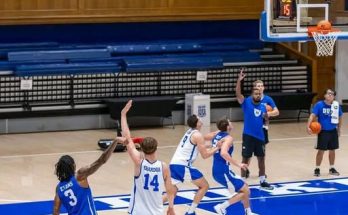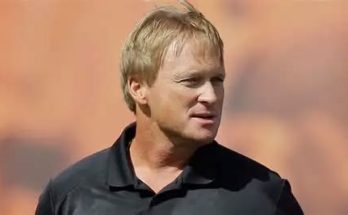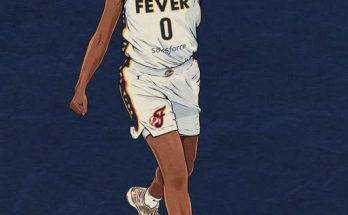The Chicago Bears: A Franchise in Freefall – Could It Get Worse?
The Chicago Bears, once a proud NFL franchise with a rich history of dominance and unforgettable moments, find themselves at an undeniable crossroads. Having endured several seasons of inconsistency and mismanagement, they are now entrenched at the bottom of the NFC North, and perhaps the most alarming aspect of their current state is that the worst may still be ahead.
Despite their passionate fanbase and storied past, the Bears have been the embodiment of dysfunction for much of the last two decades. Their place in the NFL hierarchy has been uncertain at best, and as of now, they are a franchise struggling to regain relevance. With their current roster and front-office decisions in the balance, the question arises: can it get worse for the Bears, or are they already as low as they can go? As difficult as it may be to imagine, the answer seems clear – yes, it can get worse.
The Franchise’s Current State
The Bears’ struggles are not new. Since their last playoff appearance in 2010, the franchise has been in an ongoing spiral of mediocrity. They’ve finished below .500 in more seasons than not, and have yet to find a true franchise quarterback since the days of Jay Cutler. While there have been glimpses of hope — such as their playoff appearance in 2018 — these moments have been brief, and the long-term trajectory of the franchise has largely remained stagnant.
As of 2025, the Bears are in the midst of another rebuilding phase, but what stands out is the deep uncertainty surrounding their approach to this rebuild. Chicago is stuck in the cycle of drafting quarterbacks that don’t pan out, changing coaches too often, and failing to build a solid, sustainable roster. Their most recent move to secure the top pick in the 2023 NFL Draft is a stark reminder of how desperate things have become. Despite selecting the highly touted quarterback, Justin Fields, the Bears still find themselves in last place.
The Coaching Carousel
One of the most notable issues plaguing the Bears in recent years has been their inability to settle on a stable and effective head coach. Since 2000, Chicago has cycled through nine head coaches, a number that illustrates just how chaotic things have been behind the scenes. The franchise has not given any coach the time and space to truly implement a long-term vision, leading to disjointed systems and unstable leadership at the top.
The most recent hire, Matt Eberflus, was supposed to be the stabilizing force that would turn things around. He arrived with a background in defensive coaching, and while that gave Bears fans some hope, it has become evident that Eberflus’s philosophy does not resonate with the team, particularly on the offensive side of the ball. The failure to address this balance has left the Bears with a roster that seems out of sync and perpetually uncompetitive.
Even when a coach like Eberflus might show some promise, the organization’s impatience becomes a factor. There’s a persistent rush to find the next solution, often forcing coaches to make moves that go against their best judgment. Ultimately, this lack of consistency at the coaching position prevents the Bears from building a coherent system, and by extension, success.
Quarterback Uncertainty
Perhaps the most glaring issue for the Bears, and one that has haunted the team for years, is the lack of stability at the quarterback position. For every promising young QB the franchise has drafted, there have been countless others who failed to live up to expectations.
Jay Cutler, despite his moments of brilliance, was never able to provide the consistency the Bears needed to contend. Mitch Trubisky, drafted as the second overall pick in 2017, ended up being a colossal disappointment. The Bears swung and missed on Trubisky, passing over quarterbacks like Patrick Mahomes and Deshaun Watson, two names that still haunt Chicago fans to this day. The more recent pick, Justin Fields, was seen as the franchise savior, but he, too, has struggled with consistency. While Fields has shown flashes of potential, his development has been hampered by poor offensive schemes, a lack of protection from his offensive line, and underwhelming support from his surrounding skill players.
Unfortunately, the Bears have become infamous for their inability to find a franchise quarterback, and the odds are quickly stacking against them when it comes to developing Fields into that player. With another high draft pick looming in the upcoming NFL Draft, it is quite possible that the Bears may be forced to make another tough decision about whether to continue building around Fields or once again pursue another quarterback option. Either scenario brings its own set of challenges, but neither offers a clear path to sustained success.
Front Office Failures
While the head coaches and quarterbacks have garnered much of the attention, the root cause of the Bears’ problems runs deeper, to the very heart of the franchise: its front office. The general manager (GM) position has seen constant turnover, further hindering the ability to develop a long-term strategy.
Ryan Pace, the former GM, made several moves that were widely criticized, including trading up to select Trubisky and failing to properly address key positions like offensive line and wide receiver. His successor, Ryan Poles, entered the role in 2022 with hopes of resetting the franchise’s fortunes. Poles did make some positive moves early on, such as trading away linebacker Roquan Smith to free up cap space, but his track record thus far has been spotty at best. The decision to build around Fields is a complicated one, and it seems the Bears have failed to surround their quarterback with the necessary tools to succeed.
The current front office has a long road ahead, but its lack of decisive leadership and vision continues to plague the team. Until the Bears find the right balance of front-office leadership, this cycle of mediocrity and failure will likely continue.
The State of the Roster
The Bears’ roster, in its current form, is a reflection of their ineptitude in player development and roster construction. Despite having some solid pieces, such as linebacker Roquan Smith (before he was traded) and star running back David Montgomery, the roster is thin in too many key areas. The offensive line remains one of the worst in the league, which only exacerbates the challenges Fields faces.
The wide receiver corps has been a major disappointment as well. Darnell Mooney has shown flashes of talent but has struggled with consistency, while veteran acquisitions like Allen Robinson failed to live up to expectations. The Bears have made some attempts to bolster the receiving group, such as drafting Velus Jones Jr., but those moves haven’t yet yielded the results the team hoped for.
On defense, the Bears have some pieces worth building around, like linebacker Roquan Smith and defensive tackle Eddie Goldman, but the unit as a whole has been inconsistent. While they have solid players at individual positions, the lack of a cohesive defensive strategy has been apparent, leaving the defense unable to provide the necessary support for the offense.
Financial Struggles
Another significant factor in the Bears’ ongoing struggles is the franchise’s financial situation. While the Bears are a storied franchise, they have not been able to keep up with the financial muscle of other NFL teams. They have faced challenges in securing key free agents, as the team’s cap space has been stretched thin by poor contract decisions in the past.
This financial instability has been compounded by the Bears’ outdated home, Soldier Field. Although the team has made attempts to upgrade the stadium, it remains one of the smallest and oldest venues in the league, making it an unattractive option for potential free agents. This issue directly impacts the Bears’ ability to make moves in free agency and attract top-tier talent, further hindering their efforts to improve the roster.
The Dreaded Rebuild Cycle
For years, Bears fans have endured endless cycles of hope followed by disappointment. Each offseason, a new regime promises change, and fans buy into the idea that this time, the team will finally break through. Yet, time and again, the team falls short of expectations.
The current rebuild feels like just another iteration of this cycle. It’s a process that has become all too familiar: a few high-profile moves, another disappointing season, and more promises for the future. But the problem with perpetual rebuilding is that it doesn’t allow for true progress. Each time a new regime takes over, they must undo the work of their predecessors, which only prolongs the pain for fans and further destabilizes the franchise.
Can It Get Worse?
So, the question remains: can it get worse for the Bears? Given their current trajectory, it certainly seems possible. Their front-office decisions continue to lack vision and direction, their roster is full of holes, and they face a daunting financial outlook. And as frustrating as it may be for fans, it’s not out of the question that the Bears may find themselves even further entrenched in mediocrity in the years to come.
The team has already endured years of disappointment, and there is no guarantee that their current rebuilding efforts will pay off anytime soon. Unless significant changes are made at every level of the organization — from the coaching staff to the front office — the Bears are poised to remain a bottom-tier team in the NFC North. Until they find a way to break free from the endless cycle of failure, the question may not be “Can it get worse?” but rather, “How much worse can it possibly get?”



